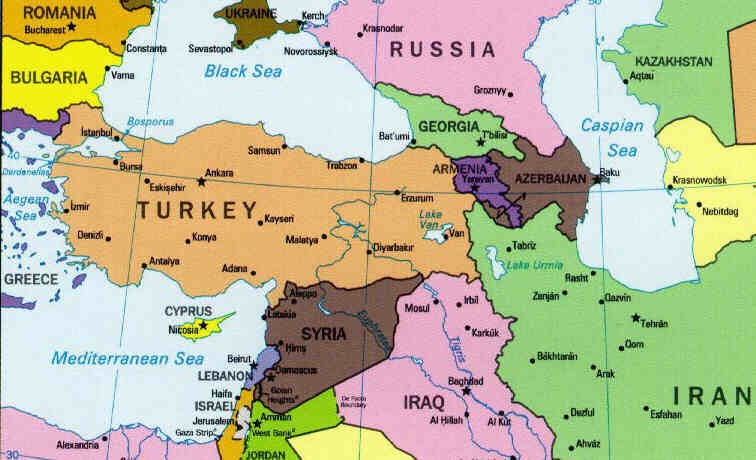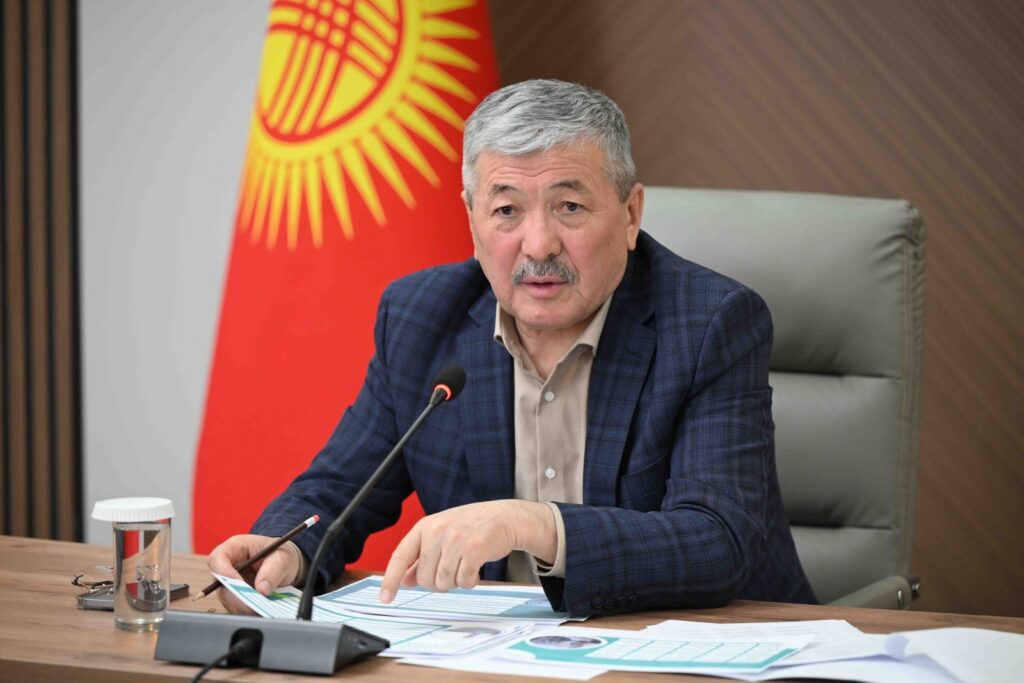LONDON (TCA) — The longstanding plan to destroy the secular states of Central Asia and eventually that of Russia cherished by Daesh and its connected Central-Asian groups has been complicated by Turkey’s recent reconciliation move towards Moscow. This could explain the choice of Istanbul as the latest terror target and the fact that it was masterminded and carried out by former Soviet citizens, probably including at least one Kyrgyz and one Uzbek perpetrator.
Russian and Central Asia connection
The Hürriyet newspaper named one of the attackers as Osman Vadinov, a Chechen of Russian nationality, and said he had come in from Raqqa, the heart of Islamic State-controlled territory in Syria. Turkish sources claimed to have identified three terrorists coming from Dagestan (Russia), Kyrgyzstan and Uzbekistan.
While official Uzbekistan remained mute on the issue, Kyrgyz authorities dismissed any “Kyrgyz trail” in the Istanbul airport attack. “The information that one of the three suicide bombers at the airport in Istanbul was a native of Kyrgyzstan has not been confirmed,” the Kyrgyz state news agency Kabar wrote more than two days after the event, referring to the press service of the Ministry of Foreign Affairs.
The man who allegedly masterminded the scheme, Ahmed Chataev, is a Russian national from Dagestan of Chechen origin while holding a Georgian passport. He fought on the Chechen rebels’ side in the secession war of 1999/2000, in which he lost an arm. He is now thought to be in Syria, but under the orders of Dokka Umarov, a Chechen terrorist chief operating from Turkey. He has been caught by police in Europe several times, but thanks to the intervention of Amnesty International and the European Court for Human Rights, the Chechen “dissident” was granted a safe passage to Austria where he had been given political asylum.
‘Volunteers’ from Central Asia
Turkey remains the main lifeline of various ranks consisting of and affiliated with the Islamic State, such as Jaysh al-Islam (Army of Islam), the Al-Nusra Front (the Syrian branch of Al-Qaeda), Ahrar Al-Sham and Takfiri. The latter forms the core of “volunteers” from Central Asia, even though the other movements within and affiliated with Daesh also count Central Asians and North Caucasians in their ranks: well over 10,000 in all – even though the Central Asian governments put their countries’ ranks much lower in number.
The affiliations between Central Asian and Middle-East terror groups in Turkey goes back to the early 1990s, when the borders of Turkey with Georgia and the Azeri enclave of Nakhchivan and the rest of former Soviet Union opened. Thousands of immigrants coming not just from the Caucasus but also from Uzbekistan and neighbouring Soviet republics poured into Turkey and settled down in locations which included the town of Ovakent near the Syrian frontier, while others moved to Istanbul.
Among the migrants was a “dissident” Uzbek named Abdullah Buhari who founded the so-called Society of Religious Assistance and Solidarity, operating in Ovakent but also in the Zeytinburnu district of Istanbul. It was there where he was killed by gunmen on the street on December 11, 2014, with Turkish authorities pointing fingers at “secret services” of Uzbekistan, his country of origin, through hired Chechen contract killers.
After Buhari’s death his role, which is thought to include financial and logistic provisions along with funneling former Soviet citizens into Syria and Iraq, was taken over by one his adepts named Rahimullah Tandoğan. According to a report posted by Hürriyet on December 14, 2014, Rahimullah Tandoğan is allegedly in close connection with another Uzbek “dissident” named Muhammad Salih, as well as with Dokka Umarov and the latter’s brother Akhmat.
The Turkish connection
How far the “Turkish connection” in Central Asia’s former Soviet republics’ terror legions is now being eliminated remains to be seen.
Many commentators have pointed at Turkey’s President Recep Erdogan’s recent U-turn in seeking reconciliation with both Moscow and Damascus; if genuine, it could mean the end of that lifeline – which means that the Istanbul attack could be seen as a “warning”. Besides, repairing ties with Russia by the more isolated Turkish regime would not fit into the plans of Chechen radicals whereas their Central Asian comrades-in-terror would see their aim, namely to topple the region’s secular regimes according to the plans Turkey had in store regarding Syria.
Political development
The latest political development has averted the immediate danger of a “Central Asian Spring” which would result in its former Soviet republics plunging into situations similar to those of Syria, Iraq, Libya and Afghanistan today. On the other hand, it could also mean that Daesh and consorts can be expected to step up schemes to carry out terror attacks in Central Asia. In other words: Getting Turkey back in line by no means signifies that Central Asia can sit back…
This is the first part of a 2-article series on terrorism in Central Asia and the region’s relations with Turkey. The second part is coming soon.









